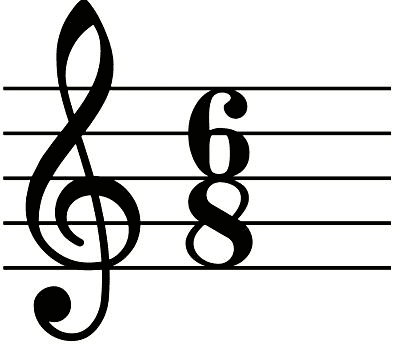In music, we have time signatures. These are represented by the signs of having two numbers placed on the stave, one above the other. These signs always come at the beginning of a bar, just after the clef. The top number is called the numerator and the bottom number is called the denominator. The numerator specifies how many beats there are in each bar of the music, from the point of that time signature, through to the point of the next time signature, where the amount of beats in each bar would then change to the number of the numerator of that sign. The denominator of a time signature specifies the note value/note length of every beat of each bar, from the point where the time signature is placed through to the point of the next time signature, where the note value of every beat of each bar would then change, depending on the number of that denominator. Of course, there might not be a change of time signature within a piece of music, it may keep the same time signature throughout the whole piece.
Each number of the denominator represents a specific note value/note length.
The number 1 means a semi-breve, which is a whole note.
The number 2 means a minim, which is a half note.
The number 4 means a crotchet, which is a quarter note.
The number 8 means a quaver, which is an 8th note.
The number 16 means a semi-quaver, which is a 16th note.
The number 32 means a demisemiquaver, which is a 32nd note.
The number 64 means a hemidemisemiquaver, which is a 64th note.
Examples of time signatures:
There are also two signs which represent certain time signatures, which are placed at the same points in the music, at the beginning of each bar, but after the clef, like how the signs above are.





No comments:
Post a Comment